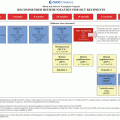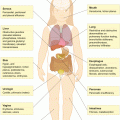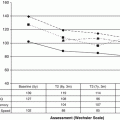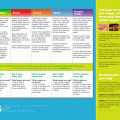Question
Response
Did the patient have any of the following tumor types: neuroblastoma, brain tumor, germ cell tumor, osteosarcoma, hepatoblastoma?
□ Yes
□ No
Did the patient receive cisplatin chemotherapy?
□ Yes
□ No
Did the patient receive cranial radiation or ear radiation?
□ Yes
□ No
Did the patient have a bone marrow transplant?
□ Yes
□ No
Has the patient had any type of surgery involving the brain or ear?
□ Yes
□ No
Does the patient have a VP shunt?
□ Yes
□ No
Has the patient received aminoglycoside antibiotics?
□ Yes
□ No
Has the patient received loop diuretics?
□ Yes
□ No
Was the patient less than 4 years old at diagnosis?
□ Yes
□ No
Was the patient’s birth weight <2,500 g (5 pounds, 8 ounces)?
□ Yes
□ No
Does the patient experience ringing or noise in his/her ears?
□ Yes
□ No
Does the patient receive any speech therapy or accommodation in school?
□ Yes
□ No
Does the patient appear to have difficulty hearing in noisy situations?
□ Yes
□ No
Does the parent have any concerns about the child’s speech or hearing?
□ Yes
□ No
Has the survivor had any kind of hearing assessment in the past?
□ Yes
□ No
Physical examination should include both the external and internal ear, with pneumatic otoscopy as the standard for assessment of the internal ear and tympanic membrane [25]. If physical examination reveals excessive cerumen, it is not advised for Primary Care Physicians to attempt removal through irrigation or manual methods, but rather, a referral to a Head and Neck specialist should be made to avoid complications in compromised ear canals [26].
12.3.4 Patient Education
Patient education for those exposed to ototoxic agents should include avoidance of loud noises, which can worsen existing hearing loss [18]. This is of particular concern to adolescent patients, who place themselves at risk with the use of personal music players played at loud volumes for long periods of time, as well as through exposure to loud music in clubs and concert venues [27]. Patients and their families should also be educated to promptly report any new onset ear pain, cerumen impaction and/or tinnitus for evaluation and treatment to prevent progression to more severe conditions that may contribute to additional hearing loss.
Patients, families and the other members of their healthcare team require education on choosing, as appropriate given the clinical diagnosis, alternative medications to those that are known to be ototoxic, such as loop diuretics (Furosemide), aminoglycosides (Gentamycin), and salicylates, to prevent further damage [28].
Patients and their families should be educated on the avoidance of ear candling, an alternative method of earwax removal, which is also claimed to have “purification” properties and curatives for cancer [29]. The U.S. Food and Drug Administration have deemed ear candles not only to be ineffective in the removal of ear wax but also dangerous to children who are at an increased risk for injury from their use [29].
12.4 Oral Health
Oral Health in America: A Report of the Surgeon General (2000) [30] found that oral diseases and disorders affect a person’s health and well-being throughout life, the mouth reflects general health and well-being, and all care providers can and should contribute to enhancing oral health. This is particularly true in the case of the childhood cancer survivor, as therapies received during their treatment may affect their oral health for many years after treatment ends. Research has shown that survivors do not utilize routine dental care, despite their high risk for dental late effects [31].
12.4.1 Risk Factors
Survivors who were treated with chemotherapy before the age of 5 are at the highest risk for dental abnormalities, particularly those exposed to alkylating agents such as Cyclophosphamide [32]. Additionally, survivors who received cranial radiation or fields involving the oral cavity at any age are at risk at for late effects, with more complications reported with higher doses [32]. Children and young adults who underwent hematopoietic cell transplantation are also at risk, both from the intensive treatment regimens that include both radiation and chemotherapy, but also from the toxicity of chronic graft versus-host-disease [2].
12.4.2 Late Effects
12.4.2.1 Xerostomia
Dry mouth is a side effect of radiation, not due to destruction of the gland, but rather due to the effect on the saliva-producing cells [33]. The resulting saliva is sparse, viscous and more acidic [33]. This can lead to additional complications including pain, difficulties with eating and swallowing and increased dental caries [33]. Xerostomia may continue to worsen for months after the end of treatment, and is generally considered irreversible [33].
12.4.2.2 Oral Squamous Cell Carcinoma
A secondary cancer in the form of squamous cell carcinomas of the oral cavity is an unfortunate reality for survivors who experienced chronic oral graft vs. host disease following hematopoietic cell transplantation [34, 2]. This secondary malignant neoplasm is likely due to mucosal injury brought on by chronic inflammation [34].
12.4.2.3 Structural Abnormalities
Hypodontia (developmentally missing teeth) and microdontia (small teeth) are documented late effects for survivors who were treated at younger than 4 years of age, when tooth development is particularly sensitive to the effects of therapy [35]. These effects are also a documented side effect of cranial radiotherapy, with a synergistic relationship noted for patients who also received alkylating chemotherapy [32].
12.4.2.4 Osteoradionecrosis
A rare but serious late effect of radiation is osteoradionecrosis of the jaw, in which the bone, once exposed through trauma or dental procedures, is unable to heal [36]. Osteoradionecrosis occurs with higher doses (at least 4,000 cGy) of radiation to areas involving the mandible, including cranium, neck, upper chest, nasopharyngeal and/or oropharyngeal sites [37]. Although the exact pathophysiology behind the development of osteoradionecrosis is debated, survivors are at risk for complications from this for many years following therapy [37].
12.4.3 Assessment
Patient assessment should include frequency of brushing and flossing, and date of last dental visit. Survivors should also undergo an annual cancer oral examination, and those at highest risk should have an exam completed every 6 months [2]. The components of a complete physical exam include inspection of the hard palate, and inspection and palpation of the lymph nodes and salivary glands, inner and outer lips, cheeks and floor of mouth. One of the most critical areas to inspect is the tongue, as it is a common site for squamous cell carcinomas to develop [38]. The patient should be asked to stick their tongue out and up, which allows for visualization of both surfaces [38]. Then, the examiner should grasp the tip of the tongue with a 2×2 gauze pad, and gently pull the tongue out and up to the right and left, inspecting both sides from the tip to the tonsillar region [38].
12.4.4 Patient Education
The American Academy of Pediatric Dentistry published guidelines on the care of pediatric cancer patients before, during, and after therapy [39]. After cancer therapy is completed, preventive strategies to promote good dental health throughout the lifespan include:
Good oral hygiene consisting of brushing with a soft nylon brush at least twice per day, with a toothpaste containing fluoride
Daily flossing
Education on limiting cariogenic foods and drinks, such as fruit juices, sugared drinks and candy
Protecting lips with lanolin-based creams and ointments, avoidance of petroleum-based products
Emphasis on routine follow-up with a dental professional at a minimum of every 6 months, or more frequently as recommended by the plan of care [39, 40].
Patients who experience xerostomia should be educated on the increased risk for dental caries. For patients who have undergone hematopoietic cell transplant, assess for any history of salivary dysfunction and educate on the use of sugar-free gum and candies, alcohol-free rinses and oral moisturizers. Saliva-stimulating drugs, such as Pilocarpine, have not been tested for safety in patients under the age of 18 and should be avoided [39].
Special consideration should be given to the oral health of hematopoietic cell transplant recipients. If the patient reports a history of chronic oral GVHD, they are at an increased risk for the development of oral squamous cell carcinomas [2]. As most oral cancers are detected at a late stage, these patients should be taught self-exam and to report the early signs of an abnormal oral lesion, including white (leukoplakia) and/or red (erythroplakia) patchy lesions on the mucosa and bleeding [2, 38].
Lip and tongue piercings are popular trends among adolescents and young adults [41]. However, in transplant survivors this is contraindicated [2]. The practice of oral piercing should be prevented in all patients; and those considering piercings should be educated on the high risk for bacterial infections, tooth and gum damage and risk for bleeding [42].
Stay updated, free articles. Join our Telegram channel

Full access? Get Clinical Tree







